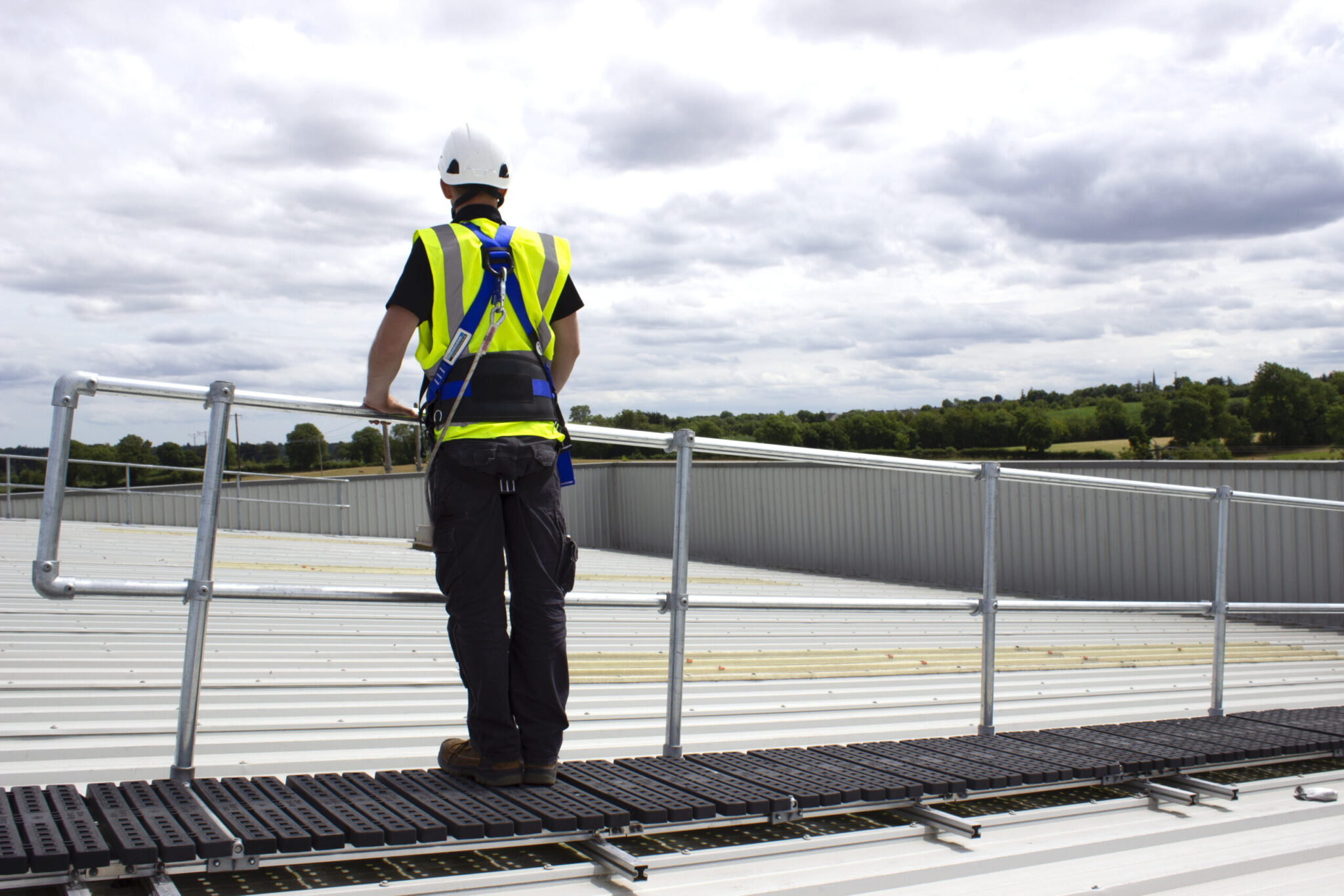Rooftop spaces offer immense potential for various purposes, from maintenance and inspections to recreational activities. However, accessing rooftops can be fraught with dangers, making safety a paramount concern. In the Philippines, where adverse weather conditions are not uncommon, ensuring safe rooftop access is of utmost importance. In this blog, we’ll explore how Philippine roof walkways, specifically anti-slip walkway systems, play a crucial role in safeguarding individuals while providing secure access to rooftop spaces.
Section 1: Understanding Rooftop Hazards
Rooftops can be treacherous environments, posing numerous hazards such as slippery surfaces, falls, and potential damage to roofing materials. In fact, statistics reveal that rooftop falls are among the leading causes of workplace accidents. These risks underscore the critical need for safety measures when working or walking on rooftops.
Section 2: The Role of Anti-Slip Walkway Systems
Anti-slip walkway systems serve as a vital solution to mitigate rooftop risks. These systems are designed to create a safe, stable, and slip-resistant surface, offering protection to both the roof and the individuals using it. Key features include durability, portability, and the ability to prevent surface damage, making them an indispensable addition to rooftop safety.
Section 3: Material Options for Roof Walkways
There are two primary material options for roof walkways: aluminum and fiberglass.
Aluminum Walkway Systems: These systems are known for their durability and non-corrosive properties. They are lightweight and can be easily installed over new or existing structures without the need for welding. Aluminum walkways also offer an outstanding aesthetic, and they can be equipped with guardrails for added safety.
Fiberglass Walkway Systems: Fiberglass walkways are ideal for corrosive environments, such as petrochemical industries and marine vessels. They are lighter than aluminum but incredibly strong. Like aluminum, they require no welding for installation and are fire retardant. High-visibility color choices of yellow or gray make them suitable for various applications, and handrails can be easily added for enhanced safety.
Section 4: Features of Anti-Slip Walkways
Anti-slip walkway systems are equipped with essential features that enhance safety. These include UV protection, fire retardancy, advanced friction designs to prevent slipping in all conditions, designated paths to define restricted areas, and adjustable hue options for improved visibility or discreet use.
Section 5: Installation and Customization
Anti-slip walkway systems offer flexibility in installation, accommodating various roof types and configurations. They can be tailored to meet specific needs and can be mounted on different surfaces, including metal decks, standing seam roofs, concrete, and more. The availability of guardrails and handrails ensures customizable safety solutions.
Section 6: Roof Walkways in the Philippines
In the unique context of the Philippines, where heavy rains and typhoons are a reality, the importance of anti-slip walkway systems cannot be overstated. These systems address the specific challenges posed by the local climate, ensuring that rooftops remain safe and accessible even during adverse weather conditions.
Section 7: Maintenance and Longevity
Proper maintenance is key to ensuring the longevity and effectiveness of anti-slip walkway systems. Regular inspections, cleaning, and addressing wear and tear promptly are essential steps. Investing in these systems contributes to long-term cost-effectiveness by reducing the risk of accidents and damage to roofing materials.
Conclusion
In conclusion, Philippine roof walkways, particularly anti-slip walkway systems, provide a comprehensive solution to the critical issue of rooftop safety. These systems not only prevent accidents but also safeguard the integrity of roofs. As we embrace the value of secure rooftop access, it’s clear that anti-slip walkway systems are an indispensable asset for anyone working or walking on rooftops in the Philippines.











